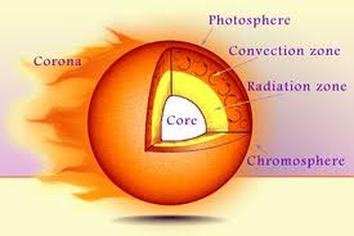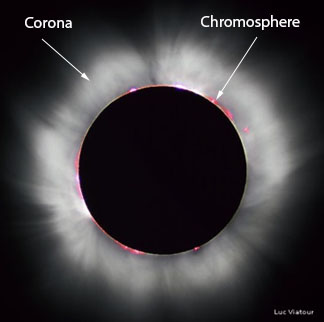When you’re looking to get a star named after you, or name a star after someone you know, it’s easy to forget the sheer wonder that allows these flaming balls of gas to exist in the first place. The existence of every available star in the intergalactic star database is dependent on the laws of physics to keep them shining in the night sky.
It is these faint glows that have inspired and moved humans for millennia. Yet for the amount of time humans have walked the Earth, it is nothing compared to the time that a lone star will shine in the cosmos.
The average science buff will tell you that a star that has the same or similar mass to the Sun will live for about 10 billion years. The larger stars will burn brighter yet have much shorter lives as they use up their hydrogen supply much faster.
But how does the star even produce that much light and heat? To understand this, we need to understand how the star is structured.

Layers of the star
It’s the force of gravity that leads to a star’s birth in the first place. Clouds of hydrogen and helium begin to collapse inwards due to gravity and as they do so they spin, faster and faster. Over time, heat and pressure will build up and it’s these extreme conditions that give rise to fusion at the core of the star. The process of fusion produces an extraordinary amount of energy. Therefore stars live for millions and billions of years as they produce a high amount of heat and light from such a small amount of mass.
For example, 1 gram of mass converted entirely to energy would be equal to an explosion of roughly 22,000 tons of TNT. That might seem like a lot, but it is not very efficient. The mass to energy efficiency is of the fusion process in the stars core is only about 1%. However, the core is so densely packed and so huge that there is enough fuel to keep a star going for millennia regardless of this fusion inefficiency. 299 million metric tons of hydrogen are converted into helium nuclei every second, releasing energy at very high rates.
Just outside the core is the Radiation zone, from here energy travels outward in the form of electromagnetic radiation. Then another layer is reached called the convection zone, and energy travels differently still. The energy travels in the way of the water boiling in a pot, rising then collapsing inward and so on. The process is called convection, hence the convection zone.
The core, the radiation zone and the convection zone all make up the inner layers of the star. We then have the three outer layers. The Photosphere is where the energy coming from the inner layers becomes visible. The photons that give off the light we can observe have already been created in the core of the star, however they take thousands of years to travel to the surface since they are constantly bouncing back and forth off the atoms they found in their path. What scientists call the photosphere is the region in which the density becomes low enough that a majority of the outward photons will not bounce off other atoms and will be irradiated into space.
There are two further layers in the atmosphere of the star still, the Chromosphere and the Corona. These layers are visible during a solar eclipse as seen in the below image.

Corona & ChromosphereIf you’re lucky enough to be within the habitable zone of a star, through radiation your planet will be enjoying a reliable and constant supply of heat. In the case of the Earth, it warms the molecules of the atmosphere, and they warm other molecules and so on. If you’re too far away from a star to feel the effects of its heat, you can still see photosphere in the form of a bright white light.
It’s this that gives the stars their distinctive glow in the night sky and allows astronomers on Earth to track them so easily 😊
Every Star in the intergalactic star database that you can see will still have this process going on at this very moment. It's worth taking the briefest of moments to imagine this going on for anyone who’s considering naming a star.
